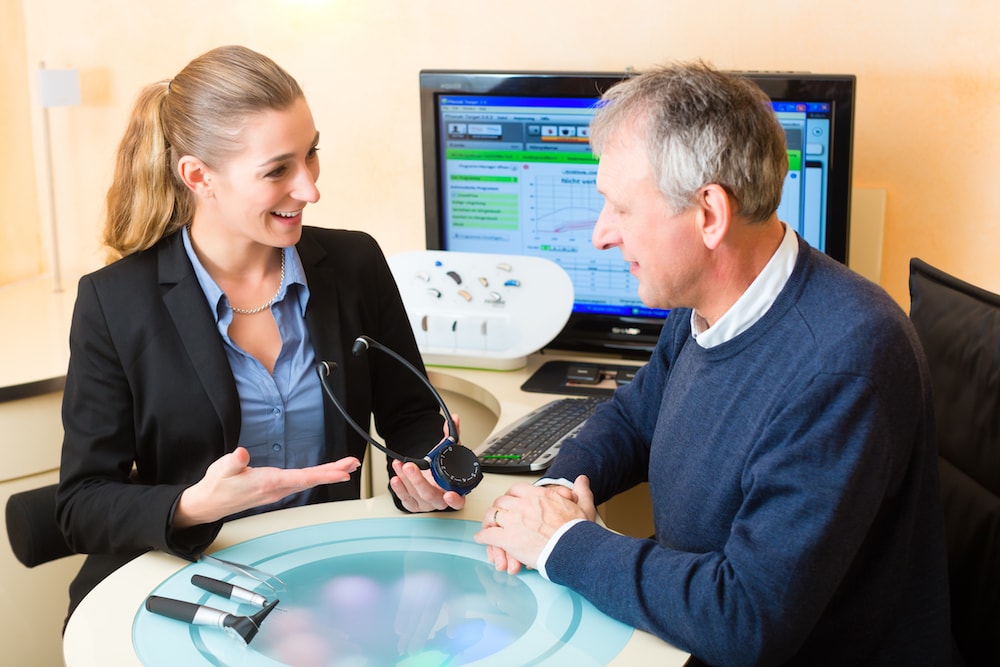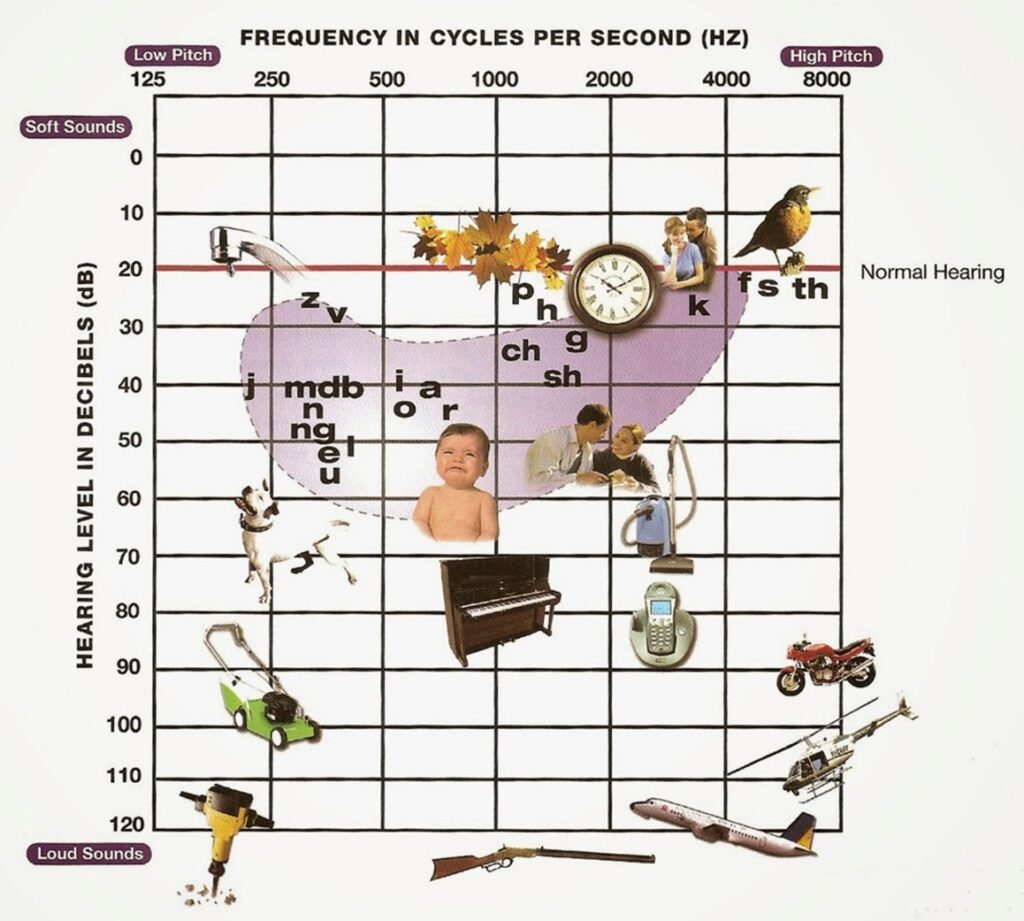“The last time I had my hearing checked, they told me I have a 70% loss!”
Does this sound familiar? It does to us. On several occasions, we have had new patients come to us and tell us something similar. But, hearing loss is not measured by a percentage, rather it is measured using decibels and hertz.
Decibels measure hearing loss by indicating how loud something has to be for you to hear it. For example, a normal conversation is between 40-60 decibels and the sound a lawn mower produces is about 90 decibels.
Hertz measures hearing loss by indicating what pitches you have trouble hearing. For example, a sparrow’s chirp can emit up to 8,000 hertz while a breaking wave at the ocean can emit up to 500 hertz.
Decibels and hertz are not measured by a percentage, so there is no way to put a percentage of how much hearing loss you have. But, by measuring decibels and hertz together, your Audiologist will be able to determine the degree of your hearing loss. Basically, how loud does a pitch have to be for you to hear it?
When you have a hearing evaluation, your results will be projected onto an audiogram. Below is an example of where common sounds fall on an audiogram
So now that we know a hearing loss can’t be measured by a percentage, lets take a look at how it can be measured, by degrees.
Profound Hearing Loss
Having a profound hearing loss means you probably can’t hear sounds that are under 95 decibels. Conversations at a normal level or normal environmental sounds cannot be heard. At this point, a cochlear implant may be needed.
Severe Hearing Loss
Having a severe hearing loss means you probably struggle hearing sounds under 70 decibels. When conversating, you will need to see the person’s face because, whether you know it or not, you are lip reading. You will probably also struggle hearing environmental sounds such as traffic and the phone ringing.
Moderate Hearing Loss
Having a moderate hearing loss means you probably struggle to hear sound under 50 decibels. During conversations, you probably ask others to repeat themselves at this point. You will also probably struggle to hear environmental sounds such as the beeping of a microwave or a knock at your door.
Mild Hearing Loss
Having a mild hearing loss means you probably have some problems hearing sounds under 30 decibels. Conversations are heard, but you struggle when there is background noise present. You may also struggle a bit with hearing environmental sounds such as chirping birds or a clock ticking.
Since the above are just examples of sounds you may struggle with concerning degrees of a hearing loss, your degree of loss is not self-diagnosable. The only true way to determine the degree of hearing loss you have is by having a complete and comprehensive evaluation by a qualified and experienced Audiologist.
To determine what degree of hearing loss you have, and what treatment options are available and right for you, call Lemme Audiology Associates at (814) 941-7770 to schedule your hearing evaluation.
Kristin Seiler – Practice Representative


